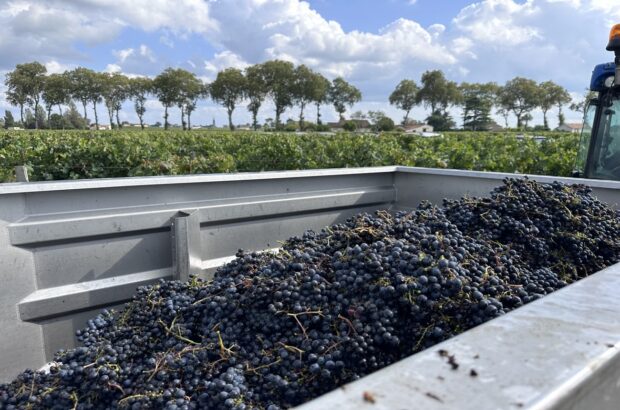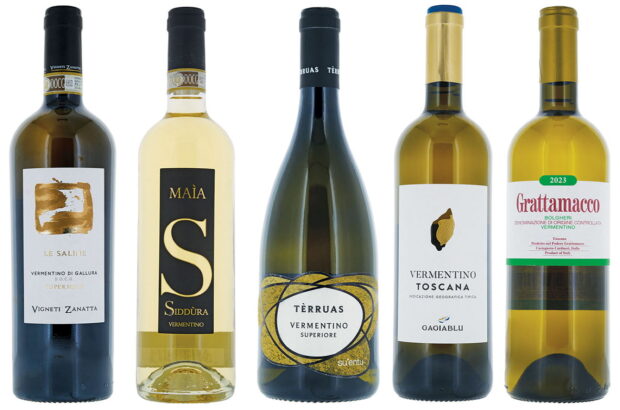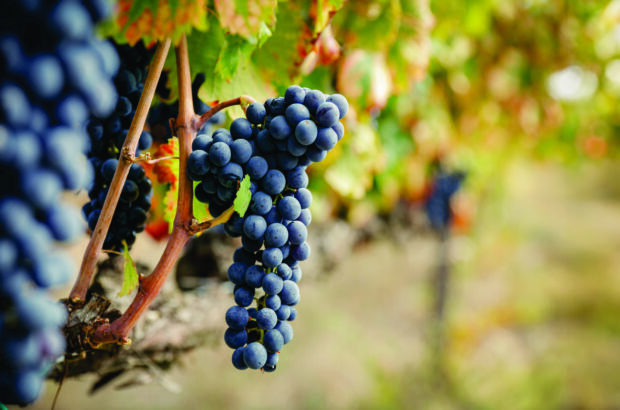With so much rosé around the world trying to emulate the Provence-style, by which most producers mean a pale pink dry wine, it can be difficult to evaluate what makes a rosé ‘not from Provence’ a good wine.
Should they be given a pat on the back for achieving a wine which is identical to those of Provence? Or should praise be given to rosés which achieve a sense of individual terroir and varietal identity?
The vast majority of rosés are made in much the same way: harvested a little earlier than the red wines, chilled, gently pressed and steel tank-fermented.
Cooler fermentation temperatures and a particular choice of yeasts determine a fruitier character, while more complexity can arise from warmer fermentation temperatures (18°C and over).
Bottling is often immediate, but a few months on the lees with varying amounts of batonnage will impart a soft roundness to the wine.
Scroll down to see 20 top rosés from around the world
{"content":"PC9wPgo8aDI+QSB3ZWFsdGggb2YgY2hvaWNlIGFuZCBzdHlsZTwvaDI+CjxwPkEgcmlzZSBpbiBxdWFsaXR5IGluIHJvc8OpIHByb2R1Y3Rpb24gZ2xvYmFsbHkgaGFzIGdpdmVuIHJpc2UgdG8gbW9yZSBjb25maWRlbnQgd2luZW1ha2luZyBhbmQgZ3JlYXRlciBleHBsb3JhdGlvbiBvZiB0aGVpciBvd24gaW5kaXZpZHVhbCBzdHlsZS48L3A+CjxwPkNvb2xlciBzaXRlcywgaGlnaGVyIGFsdGl0dWRlcyAodGhlIDxzdHJvbmc+PGEgaHJlZj0iaHR0cHM6Ly93d3cuZGVjYW50ZXIuY29tL3dpbmUtbmV3cy93b3JsZHMtaGlnaGVzdC12aW5leWFyZC10aWJldC1zYXlzLWd1aW5uZXNzLXdvcmxkLXJlY29yZHMtNDAyNDQ3LyIgdGFyZ2V0PSJfYmxhbmsiIHJlbD0ibm9vcGVuZXIgbm9yZWZlcnJlciI+VGliZXRhbjwvYT4gPC9zdHJvbmc+cm9zw6kgaXMgcHJvZHVjZWQgYXQgMiwwMDBtKSBhbmQgb2xkIHZpbmVzIChub3J0aGVybiA8c3Ryb25nPjxhIGhyZWY9Imh0dHBzOi8vd3d3LmRlY2FudGVyLmNvbS93aW5lL3dpbmUtcmVnaW9ucy9zcGFpbi8iIHRhcmdldD0iX2JsYW5rIiByZWw9Im5vb3BlbmVyIG5vcmVmZXJyZXIiPlNwYWluPC9hPiA8L3N0cm9uZz5pbiBwYXJ0aWN1bGFyKSBhcmUgYWxsIGltcG9ydGFudCBwb2ludHMgb2YgZGlmZmVyZW5jZS48L3A+CjxkaXYgY2xhc3M9ImFkLWNvbnRhaW5lciBhZC1jb250YWluZXItLW1vYmlsZSI+PGRpdiBpZD0icG9zdC1pbmxpbmUtMyIgY2xhc3M9ImlwYy1hZHZlcnQiPjwvZGl2PjwvZGl2Pgo8cD5BbmQgd2hpbGUgPHN0cm9uZz48YSBocmVmPSJodHRwczovL3d3dy5kZWNhbnRlci5jb20vd2luZS9ncmFwZS12YXJpZXRpZXMvZ3JlbmFjaGUtZ2FybmFjaGEvIiB0YXJnZXQ9Il9ibGFuayIgcmVsPSJub29wZW5lciBub3JlZmVycmVyIj5HcmVuYWNoZTwvYT4gPC9zdHJvbmc+c3RpbGwgZG9taW5hdGVzIHRoZSBzdGF0aXN0aWNzLCBwcm9kdWNpbmcgcm9zw6lzIGFjcm9zcyBzb3V0aGVybiBGcmFuY2UsIG5vcnRoZXJuIFNwYWluIGFuZCBwYXJ0cyBvZiBJdGFseSwgbWFueSBtb3JlIHZhcmlldGllcywgd2l0aCB0aGVpciBvd24gdGFzdGUgcHJvZmlsZSwgY2FuIGJlIGZvdW5kLjwvcD4KPHA+U21hbGwtc2NhbGUgcHJvZHVjZXJzLCB0aGVpciB3aW5lcyBvZnRlbiBmb3VuZCBpbiBzbWFsbGVyIGluZGVwZW5kZW50IHdpbmUgbWVyY2hhbnRzLCBhcmUgbGliZXJhdGVkIGZyb20gdGhlIGhpZ2ggdm9sdW1lIGNvbW1lcmNpYWwgY29uc3RyYWludHMgb2YgcHJvZHVjaW5nIFByb3ZlbmNlLXN0eWxlLCBhbmQgYXJlIG9mdGVuIGhpZ2hseSBpbWFnaW5hdGl2ZSBpbiB0aGVpciBpbnRlcnByZXRhdGlvbiBvZiBwaW5rIHdpbmUuPC9wPgo8ZGl2IGNsYXNzPSJhZC1jb250YWluZXIgYWQtY29udGFpbmVyLS1tb2JpbGUiPjxkaXYgaWQ9InBvc3QtaW5saW5lLTQiIGNsYXNzPSJpcGMtYWR2ZXJ0Ij48L2Rpdj48L2Rpdj4KPGhyPgo8aDIgc3R5bGU9InRleHQtYWxpZ246IGNlbnRlciI+PC9oMj4KPHA+PGltZyBmZXRjaHByaW9yaXR5PSJoaWdoIiBkZWNvZGluZz0iYXN5bmMiIGNsYXNzPSJsYXp5bG9hZCBibHVyLXVwIGFsaWduY2VudGVyIHdwLWltYWdlLTUwNzc5MSBzaXplLWxhcmdlIiBkYXRhLXByb2Nlc3NlZCBzcmM9Imh0dHBzOi8vd3d3LmRlY2FudGVyLmNvbS93cC1jb250ZW50L3RoZW1lcy9zaW1iYS10aGVtZS9hc3NldHMvaW1hZ2VzL3BsYWNlaG9sZGVyLnBuZyIgZGF0YS1zcmM9Imh0dHBzOi8va2V5YXNzZXRzLnRpbWVpbmN1ay5uZXQvaW5zcGlyZXdwL2xpdmUvd3AtY29udGVudC91cGxvYWRzL3NpdGVzLzM0LzIwMjMvMDcvU2hhZGVzLTYzMHg0MTcuanBnIiBhbHQ9InJvc8OpIHdpbmVzIGJleW9uZCBQcm92ZW5jZSIgd2lkdGg9IjYzMCIgaGVpZ2h0PSI0MTciIGRhdGEtc2l6ZXM9ImF1dG8iIGRhdGEtc3Jjc2V0PSJodHRwczovL2tleWFzc2V0cy50aW1laW5jdWsubmV0L2luc3BpcmV3cC9saXZlL3dwLWNvbnRlbnQvdXBsb2Fkcy9zaXRlcy8zNC8yMDIzLzA3L1NoYWRlcy02MzB4NDE3LmpwZyA2MzB3LCBodHRwczovL2tleWFzc2V0cy50aW1laW5jdWsubmV0L2luc3BpcmV3cC9saXZlL3dwLWNvbnRlbnQvdXBsb2Fkcy9zaXRlcy8zNC8yMDIzLzA3L1NoYWRlcy0zMDB4MTk4LmpwZyAzMDB3LCBodHRwczovL2tleWFzc2V0cy50aW1laW5jdWsubmV0L2luc3BpcmV3cC9saXZlL3dwLWNvbnRlbnQvdXBsb2Fkcy9zaXRlcy8zNC8yMDIzLzA3L1NoYWRlcy0xMzV4ODkuanBnIDEzNXcsIGh0dHBzOi8va2V5YXNzZXRzLnRpbWVpbmN1ay5uZXQvaW5zcGlyZXdwL2xpdmUvd3AtY29udGVudC91cGxvYWRzL3NpdGVzLzM0LzIwMjMvMDcvU2hhZGVzLTMyMHgyMTIuanBnIDMyMHcsIGh0dHBzOi8va2V5YXNzZXRzLnRpbWVpbmN1ay5uZXQvaW5zcGlyZXdwL2xpdmUvd3AtY29udGVudC91cGxvYWRzL3NpdGVzLzM0LzIwMjMvMDcvU2hhZGVzLTYyMHg0MTAuanBnIDYyMHcsIGh0dHBzOi8va2V5YXNzZXRzLnRpbWVpbmN1ay5uZXQvaW5zcGlyZXdwL2xpdmUvd3AtY29udGVudC91cGxvYWRzL3NpdGVzLzM0LzIwMjMvMDcvU2hhZGVzLTkyMHg2MDkuanBnIDkyMHcsIGh0dHBzOi8va2V5YXNzZXRzLnRpbWVpbmN1ay5uZXQvaW5zcGlyZXdwL2xpdmUvd3AtY29udGVudC91cGxvYWRzL3NpdGVzLzM0LzIwMjMvMDcvU2hhZGVzLTEyMjB4ODA3LmpwZyAxMjIwdywgaHR0cHM6Ly9rZXlhc3NldHMudGltZWluY3VrLm5ldC9pbnNwaXJld3AvbGl2ZS93cC1jb250ZW50L3VwbG9hZHMvc2l0ZXMvMzQvMjAyMy8wNy9TaGFkZXMuanBnIDEzMDB3IiBzaXplcz0iKG1heC13aWR0aDogNjMwcHgpIDEwMHZ3LCA2MzBweCIgLz48L3A+Cjxocj4KPHAgc3R5bGU9InRleHQtYWxpZ246IGNlbnRlciI+PHN0cm9uZz48YSBocmVmPSJodHRwczovL3d3dy5kZWNhbnRlci5jb20vcHJlbWl1bS9wb3J0dWd1ZXNlLXJvc2UtdGhlLW5leHQtYmlnLXRoaW5nLTUwNjI5NC8iIHRhcmdldD0iX2JsYW5rIiByZWw9Im5vb3BlbmVyIG5vcmVmZXJyZXIiPklzPC9hPjwvc3Ryb25nPjxzdHJvbmc+PGEgaHJlZj0iaHR0cHM6Ly93d3cuZGVjYW50ZXIuY29tL3ByZW1pdW0vcG9ydHVndWVzZS1yb3NlLXRoZS1uZXh0LWJpZy10aGluZy01MDYyOTQvIiB0YXJnZXQ9Il9ibGFuayIgcmVsPSJub29wZW5lciBub3JlZmVycmVyIj4gUG9ydHVndWVzZSByb3PDqSB0aGUgbmV4dCBiaWcgdGhpbmc\/PC9hPjwvc3Ryb25nPjwvcD4KPGRpdiBjbGFzcz0iYWQtY29udGFpbmVyIGFkLWNvbnRhaW5lci0tbW9iaWxlIj48ZGl2IGlkPSJwb3N0LWlubGluZS01IiBjbGFzcz0iaXBjLWFkdmVydCI+PC9kaXY+PC9kaXY+Cjxocj4KPHAgc3R5bGU9InRleHQtYWxpZ246IGxlZnQiPk1hcmtldCBkZW1hbmRzIGFyZSBzdGlsbCBkaWN0YXRpbmcgaG93IG1hbnkgcm9zw6lzIGFyZSBtYWRlLCByZXN1bHRpbmcgaW4gbWFueSBwcm9kdWNlcnMgbWFraW5nIHNldmVyYWwsIHRvdGFsbHkgZGlmZmVyZW50LCBzdHlsZXMgb2Ygcm9zw6k6IG9uZSBmb3IgdGhlIGxvY2FsIG1hcmtldCBvZnRlbiBtYWRlIGluIGEgbW9yZSB0cmFkaXRpb25hbCwgPHN0cm9uZz48YSBocmVmPSJodHRwczovL3d3dy5kZWNhbnRlci5jb20vcHJlbWl1bS9mdWxsLWJvZGllZC1yb3Nlcy1wcm91ZC10by1iZS1waW5rLTQ4MTg1My8iIHRhcmdldD0iX2JsYW5rIiByZWw9Im5vb3BlbmVyIG5vcmVmZXJyZXIiPmZ1bGxlciBib2RpZWQsIGRhcmtlciBzdHlsZTwvYT48L3N0cm9uZz47IG9uZSBmb3IgZXhwb3J0IOKAkyB1c3VhbGx5IHBhbGVyIFByb3ZlbmNlLXN0eWxlIOKAkyBmcmVzaCwgZnJ1aXR5IGFuZCBnYXN0cm9ub21pYywgYW5kIHNvbWUgc3R5bGVzIG9mdGVuIG9ha2VkIG9yIHdpdGggc29tZSBhZ2UuPC9wPgo8cCBzdHlsZT0idGV4dC1hbGlnbjogbGVmdCI+SW5jcmVhc2luZ2x5LCByZXRhaWxlcnMgYXJlIGxvb2tpbmcgYXQgbW92aW5nIGFsbCByb3PDqXMgZnJvbSBvbmUgc2hlbGYgdG8gZGlzcGxheWluZyBieSByZWdpb24gb3Igc2VwYXJhdGluZyBzdHlsZXMuPC9wPgo8aDI+RWxldmF0aW9uIGFuZCBkaXZlcnNpdHk8L2gyPgo8cD5SYWlzaW5nIHRoZSBnbGFzcyBjZWlsaW5nIGFzIGZhciBhcyBwcmljaW5nIGdvZXMgaGFzIGNlcnRhaW5seSBiZW5lZml0ZWQgdGhlIHF1YWxpdHkgYW5kIGRpdmVyc2l0eSBvZiByb3PDqS4gV2l0aCBTYWNoYSBMaWNoaW5lIGF0IDxzdHJvbmc+PGEgaHJlZj0iaHR0cHM6Ly93d3cuZGVjYW50ZXIuY29tL3dpbmUvd2luZS1yZWdpb25zL3Byb3ZlbmNlL3doaXNwZXJpbmctYW5nZWwtcm9zZS13aW5lLTM5NjQ5MC8iIHRhcmdldD0iX2JsYW5rIiByZWw9Im5vb3BlbmVyIG5vcmVmZXJyZXIiPkNow6J0ZWF1IGTigJlFc2NsYW5zPC9hPjwvc3Ryb25nPiBpbiBQcm92ZW5jZSBhbmQgPGEgaHJlZj0iaHR0cHM6Ly93d3cuZGVjYW50ZXIuY29tL3ByZW1pdW0vZ2VyYXJkLWJlcnRyYW5kLWJlaGluZC10aGUtbGFuZ3VlZG9jLWxhYmVscy1wbHVzLTEwLXdpbmVzLXRhc3RlZC00NDU0OTYvIiB0YXJnZXQ9Il9ibGFuayIgcmVsPSJub29wZW5lciBub3JlZmVycmVyIj48c3Ryb25nPkfDqXJhcmQgQmVydHJhbmQ8L3N0cm9uZz48L2E+IGF0PGEgaHJlZj0iaHR0cHM6Ly93d3cuZGVjYW50ZXIuY29tL3ByZW1pdW0vZ2VyYXJkLWJlcnRyYW5kcy1jbG9zLWR1LXRlbXBsZS12aW50YWdlLXZlcnRpY2FsLTUxMzM1My8iIHRhcmdldD0iX2JsYW5rIiByZWw9Im5vb3BlbmVyIG5vcmVmZXJyZXIiPiA8c3Ryb25nPkNsb3MgZHUgVGVtcGxlPC9zdHJvbmc+PC9hPiBib3RoIGJyZWFraW5nIHRoZSBwcmljZSBiYXJyaWVyLCB0aGUgcmFjZSBpcyBubyBsb25nZXIgY29uZmluZWQgdG8gd2hvIGNhbiBwcm9kdWNlIHRoZSBiZXN0IGFuZCBjaGVhcGVzdCBwYWxlIHBpbmsgd2luZS48L3A+CjxwPlZhcmlldGllcyBvbmNlIHJlc2VydmVkIGZvciBwcmVtaXVtIHJlZCB3aW5lcyBhcmUgbm93IGJlaW5nIHJlY29uc2lkZXJlZCBmb3Igcm9zw6kuIFRoaXMgaGFzIGJlZW4gaGVscGVkIGJ5IHRoZSBtYXJrZXQgbW92ZSB0b3dhcmRzIGxpZ2h0ZXIgYW5kIGZyZXNoZXIgcmVkcyBhbmQgZGFya2VyLCBtb3JlIHJvYnVzdCByb3PDqSwgd2l0aCBkYXJrIGdsYXNzIGJvdHRsZXMgaW5jcmVhc2luZ2x5IGJlaW5nIHVzZWQgYXMgYW4gaW5kaWNhdG9yIG9mIHNlcmlvdXMgcm9zw6lzLjwvcD4KPHA+RXhwZWN0IGEgZ3JlYXRlciBudW1iZXIgb2YgZGl2ZXJzZSBhbmQgaW50ZXJlc3Rpbmcgcm9zw6lzIHRvIGluY3JlYXNpbmdseSBhcHBlYXJpbmcgb24gdGhlIHNjZW5lICh0aGVyZSBhcmUgbGFyZ2UgbnVtYmVycyBvZiBzbWFsbCB2b2x1bWUgZXhwZXJpbWVudGFsIHdpbmVzIGJlaW5nIHByb2R1Y2VkIHN1Y2ggYXMgdGhlIEFndGhvdG8gZnJvbSBLaXIgWWlhbm5pcykuPC9wPgo8cD5OZXcgZ2VuZXJhdGlvbnMgb2Ygd2luZW1ha2VycyBhcmUgYWxzbyBjb21pbmcgb24gdGhlIHNjZW5lLCBlYWdlciB0byB0cnkgb3V0IG5ldyBpZGVhcy4gRXZlbiBpbiB0aGUgcm9zw6kgYmFzdGlvbiBvZiBQcm92ZW5jZSB0aGVyZSBhcmUgeW91bmcgcHJvZHVjZXJzIHRyeWluZyBvdXQgZGlmZmVyZW50IHN0eWxlcyBhbmQgbWV0aG9kcy48L3A+CjxwPjxpbWcgZGVjb2Rpbmc9ImFzeW5jIiBjbGFzcz0ibGF6eWxvYWQgYmx1ci11cCBhbGlnbmNlbnRlciB3cC1pbWFnZS0zNzE0NTMgc2l6ZS1sYXJnZSIgZGF0YS1wcm9jZXNzZWQgc3JjPSJodHRwczovL3d3dy5kZWNhbnRlci5jb20vd3AtY29udGVudC90aGVtZXMvc2ltYmEtdGhlbWUvYXNzZXRzL2ltYWdlcy9wbGFjZWhvbGRlci5wbmciIGRhdGEtc3JjPSJodHRwczovL2tleWFzc2V0cy50aW1laW5jdWsubmV0L2luc3BpcmV3cC9saXZlL3dwLWNvbnRlbnQvdXBsb2Fkcy9zaXRlcy8zNC8yMDE3LzA2L1VLLWhlYXR3YXZlLXByb3ZlbmNlLXJvc2UtNjMweDQxNy5qcGciIGFsdD0icm9zw6kgd2luZXMgYmV5b25kIFByb3ZlbmNlIiB3aWR0aD0iNjMwIiBoZWlnaHQ9IjQxNyIgZGF0YS1zaXplcz0iYXV0byIgZGF0YS1zcmNzZXQ9Imh0dHBzOi8va2V5YXNzZXRzLnRpbWVpbmN1ay5uZXQvaW5zcGlyZXdwL2xpdmUvd3AtY29udGVudC91cGxvYWRzL3NpdGVzLzM0LzIwMTcvMDYvVUstaGVhdHdhdmUtcHJvdmVuY2Utcm9zZS02MzB4NDE3LmpwZyA2MzB3LCBodHRwczovL2tleWFzc2V0cy50aW1laW5jdWsubmV0L2luc3BpcmV3cC9saXZlL3dwLWNvbnRlbnQvdXBsb2Fkcy9zaXRlcy8zNC8yMDE3LzA2L1VLLWhlYXR3YXZlLXByb3ZlbmNlLXJvc2UtMTM1eDg5LmpwZyAxMzV3LCBodHRwczovL2tleWFzc2V0cy50aW1laW5jdWsubmV0L2luc3BpcmV3cC9saXZlL3dwLWNvbnRlbnQvdXBsb2Fkcy9zaXRlcy8zNC8yMDE3LzA2L1VLLWhlYXR3YXZlLXByb3ZlbmNlLXJvc2UtMzAweDE5OC5qcGcgMzAwdywgaHR0cHM6Ly9rZXlhc3NldHMudGltZWluY3VrLm5ldC9pbnNwaXJld3AvbGl2ZS93cC1jb250ZW50L3VwbG9hZHMvc2l0ZXMvMzQvMjAxNy8wNi9VSy1oZWF0d2F2ZS1wcm92ZW5jZS1yb3NlLTMyMHgyMTIuanBnIDMyMHcsIGh0dHBzOi8va2V5YXNzZXRzLnRpbWVpbmN1ay5uZXQvaW5zcGlyZXdwL2xpdmUvd3AtY29udGVudC91cGxvYWRzL3NpdGVzLzM0LzIwMTcvMDYvVUstaGVhdHdhdmUtcHJvdmVuY2Utcm9zZS02MjB4NDEwLmpwZyA2MjB3LCBodHRwczovL2tleWFzc2V0cy50aW1laW5jdWsubmV0L2luc3BpcmV3cC9saXZlL3dwLWNvbnRlbnQvdXBsb2Fkcy9zaXRlcy8zNC8yMDE3LzA2L1VLLWhlYXR3YXZlLXByb3ZlbmNlLXJvc2UuanBnIDY1MHciIHNpemVzPSIobWF4LXdpZHRoOiA2MzBweCkgMTAwdncsIDYzMHB4IiAvPjwvcD4KPHA+Q2xhc3NpY3Mgc3RpbGwgZXhpc3QuIExvbmdlciBtYWNlcmF0ZWQgcm9zw6lzIGZyb20gPHN0cm9uZz48YSBocmVmPSJodHRwczovL3d3dy5kZWNhbnRlci5jb20vcHJlbWl1bS93YWxscy10YXZlbC1hbmQtaXRzLXVuZXhwZWN0ZWQtcmV2b2x1dGlvbi00Nzg2MzYvIiB0YXJnZXQ9Il9ibGFuayIgcmVsPSJub29wZW5lciBub3JlZmVycmVyIj5UYXZlbDwvYT4gPC9zdHJvbmc+d2l0aCB0aGVpciBibGVuZCBvZiBudW1lcm91cyBzb3V0aGVybiA8YSBocmVmPSJodHRwczovL3d3dy5kZWNhbnRlci5jb20vd2luZS93aW5lLXJlZ2lvbnMvcmhvbmUtdmFsbGV5LyIgdGFyZ2V0PSJfYmxhbmsiIHJlbD0ibm9vcGVuZXIgbm9yZWZlcnJlciI+PHN0cm9uZz5SaMO0bmU8L3N0cm9uZz48L2E+IHZhcmlldGllcywgPHN0cm9uZz48YSBocmVmPSJodHRwczovL3d3dy5kZWNhbnRlci5jb20vcHJlbWl1bS9leHBlcnRzLWNob2ljZS1uYXZhcnJhcy1uYXRpdmUtZ2FybmFjaGEtcmlzZXMtb25jZS1tb3JlLTUyMTQ3Mi8iIHRhcmdldD0iX2JsYW5rIiByZWw9Im5vb3BlbmVyIG5vcmVmZXJyZXIiPkdyZW5hY2hlLWJhc2VkIE5hdmFycmUgcm9zw6lzPC9hPjwvc3Ryb25nPiBhbmQgdGhlIDxzdHJvbmc+PGEgaHJlZj0iaHR0cHM6Ly93d3cuZGVjYW50ZXIuY29tL3dpbmUvZ3JhcGUtdmFyaWV0aWVzL3Bpbm90LW5vaXIvIiB0YXJnZXQ9Il9ibGFuayIgcmVsPSJub29wZW5lciBub3JlZmVycmVyIj5QaW5vdCBOb2lyPC9hPjwvc3Ryb25nPiByb3PDqXMgZnJvbSA8c3Ryb25nPjxhIGhyZWY9Imh0dHBzOi8vd3d3LmRlY2FudGVyLmNvbS93aW5lLW5ld3Mvb3Bpbmlvbi9uZXdzLWJsb2dzLWFuc29uL2Fuc29uLXJvc2UtZGUtcmljZXlzLWJ1cmd1bmRpYW4tc291bC0zNjg3OTgvIiB0YXJnZXQ9Il9ibGFuayIgcmVsPSJub29wZW5lciBub3JlZmVycmVyIj5Sb3PDqSBkZSBSaWNleXM8L2E+PC9zdHJvbmc+LjwvcD4KPHA+TG9jYWwgdmFyaWV0aWVzIHdpdGggdGhlIGFiaWxpdHkgdG8gZGVhbCB3ZWxsIHdpdGggaG90dGVyLCBkcmllciBzdW1tZXJzIGFyZSBiZWNvbWluZyBpbmNyZWFzaW5nbHkgYXR0cmFjdGl2ZSB0byB3aW5lbWFrZXJzLiA8c3Ryb25nPjxhIGhyZWY9Imh0dHBzOi8vd3d3LmRlY2FudGVyLmNvbS93aW5lL2NvcnNpY2EtZm9yLXdpbmUtbG92ZXJzLTUxMTYzMy8iIHRhcmdldD0iX2JsYW5rIiByZWw9Im5vb3BlbmVyIG5vcmVmZXJyZXIiPkNvcnNpY2HigJlzPC9hPjwvc3Ryb25nPiBtaW5lcmFsLWxhZGVuIGZyZXNoIHJvc8OpcyBtYWRlIHdpdGggPHN0cm9uZz48YSBocmVmPSJodHRwczovL3d3dy5kZWNhbnRlci5jb20vd2luZS9ncmFwZS12YXJpZXRpZXMvbmllbGx1Y2Npby1yZWQtNTIzOTEvIiB0YXJnZXQ9Il9ibGFuayIgcmVsPSJub29wZW5lciBub3JlZmVycmVyIj5OaWVsbHVjY2l1PC9hPiA8L3N0cm9uZz4oPHN0cm9uZz48YSBocmVmPSJodHRwczovL3d3dy5kZWNhbnRlci5jb20vd2luZS9ncmFwZS12YXJpZXRpZXMvc2FuZ2lvdmVzZS8iIHRhcmdldD0iX2JsYW5rIiByZWw9Im5vb3BlbmVyIG5vcmVmZXJyZXIiPlNhbmdpb3Zlc2U8L2E+PC9zdHJvbmc+KSBhbmQgU2NpYWNjYXJlbGx1IHZhcmlldGllcy48L3A+CjxwPk5lZ3JvYW1hcm8gYW5kIEdyb3BlbGxvIGluIDxzdHJvbmc+PGEgaHJlZj0iaHR0cHM6Ly93d3cuZGVjYW50ZXIuY29tL3dpbmUvcmVnaW9uYWwtcHJvZmlsZS1wdWdsaWEtcGx1cy10aGUtMTItYm90dGxlcy13b3J0aC1sb29raW5nLW91dC1mb3ItNTE1Nzc2LyIgdGFyZ2V0PSJfYmxhbmsiIHJlbD0ibm9vcGVuZXIgbm9yZWZlcnJlciI+UHVnbGlhPC9hPjwvc3Ryb25nPiwgTmVyZWxsbyBNYXNjYWxlc2UgaW4gPHN0cm9uZz48YSBocmVmPSJodHRwczovL3d3dy5kZWNhbnRlci5jb20vd2luZS93aW5lLXJlZ2lvbnMvc2ljaWx5LyIgdGFyZ2V0PSJfYmxhbmsiIHJlbD0ibm9vcGVuZXIgbm9yZWZlcnJlciI+U2ljaWx5PC9hPjwvc3Ryb25nPiwgPHN0cm9uZz48YSBocmVmPSJodHRwczovL3d3dy5kZWNhbnRlci5jb20vZGVjYW50ZXItd29ybGQtd2luZS1hd2FyZHMveGlub21hdnJvLTEwLWF3YXJkLXdpbm5pbmctZ3JlZWstd2luZXMtdG8tdHJ5LTQ0NjMzNy8iIHRhcmdldD0iX2JsYW5rIiByZWw9Im5vb3BlbmVyIG5vcmVmZXJyZXIiPlhpbm9tYXZybzwvYT4gPC9zdHJvbmc+YW5kIDxzdHJvbmc+PGEgaHJlZj0iaHR0cHM6Ly93d3cuZGVjYW50ZXIuY29tL3dpbmUtcmV2aWV3cy9zZWFyY2gvYWdpb3JnaXRpa28vcGFnZS8xLzYiIHRhcmdldD0iX2JsYW5rIiByZWw9Im5vb3BlbmVyIG5vcmVmZXJyZXIiPkFnaW9yZ2l0aWtvPC9hPiA8L3N0cm9uZz5pbiA8c3Ryb25nPjxhIGhyZWY9Imh0dHBzOi8vd3d3LmRlY2FudGVyLmNvbS9wcmVtaXVtL2dyZWVrLW9keXNzZXktb2xseS1zbWl0aHMtcGljay1vZi10aGUtcmVnaW9ucy1hbmQtd2luZXMtNDgzMTE3LyIgdGFyZ2V0PSJfYmxhbmsiIHJlbD0ibm9vcGVuZXIgbm9yZWZlcnJlciI+R3JlZWNlPC9hPjwvc3Ryb25nPiwgPHN0cm9uZz48YSBocmVmPSJodHRwczovL3d3dy5kZWNhbnRlci5jb20vd2luZS9ncmFwZS12YXJpZXRpZXMvdGludG8tY2FvLXJlZC01MjEwNy8iIHRhcmdldD0iX2JsYW5rIiByZWw9Im5vb3BlbmVyIG5vcmVmZXJyZXIiPlRpbnRhIEPDo288L2E+PC9zdHJvbmc+IGFuZCBSdWZldGUgaW4gdGhlIDxzdHJvbmc+PGEgaHJlZj0iaHR0cHM6Ly93d3cuZGVjYW50ZXIuY29tL3dpbmUtdHJhdmVsL3NwYWluLXBvcnR1Z2FsL2RvdXJvLXRyYXZlbC1ndWlkZS0zNTI3NDMvIiB0YXJnZXQ9Il9ibGFuayIgcmVsPSJub29wZW5lciBub3JlZmVycmVyIj5Eb3VybzwvYT4gPC9zdHJvbmc+KGluIGZhY3QgUG9ydHVnYWwgaGFzIGFuIG92ZXItYWJ1bmRhbmNlIG9mIGludGVyZXN0aW5nIHZhcmlldGllcyksIDxzdHJvbmc+PGEgaHJlZj0iaHR0cHM6Ly93d3cuZGVjYW50ZXIuY29tL2RlY2FudGVyLXdvcmxkLXdpbmUtYXdhcmRzL2lzdHJpYW4tYXV0aGVudGljaXR5LTE1LW1hbHZhemlqYS1hbmQtdGVyYW4td2luZXMtdG8tdHJ5LTUyNTA2OS8iIHRhcmdldD0iX2JsYW5rIiByZWw9Im5vb3BlbmVyIG5vcmVmZXJyZXIiPlRlcmFuIGluIElzdHJpYTwvYT48L3N0cm9uZz4sIFdpbGRiYWNoZXIgaW4gPHN0cm9uZz48YSBocmVmPSJodHRwczovL3d3dy5kZWNhbnRlci5jb20vd2luZS1yZXZpZXdzLXRhc3RpbmdzL2F1c3RyaWFuLXdpbmUtc3R5bGUtZ3VpZGUtMzU0NTQ4LyIgdGFyZ2V0PSJfYmxhbmsiIHJlbD0ibm9vcGVuZXIgbm9yZWZlcnJlciI+U3R5cmlhPC9hPjwvc3Ryb25nPuKApjwvcD4KPGgyPlJpc2Ugb2YgdGhlIGJhcnJlbDwvaDI+CjxwPk1vcmUgb3hpZGF0aXZlIHdpbmVtYWtpbmcgY2FuIG1ha2UgZm9yIHJpY2hlciBhbmQgbW9yZSBjb21wbGV4IHJvc8OpLiBPYWstYWdlZCByb3PDqSBpcyBub3QgbGltaXRlZCB0byBQcm92ZW5jZSwgYWx0aG91Z2ggdGhlIHVzZSBvZiBvYWsgZG9lcyBub3QgZ3VhcmFudGVlIGEgcHJlbWl1bSB3aW5lIGlmIGl0IG90aGVyd2lzZSBsYWNrcyBleHRyYWN0aW9uLCByaXBlbmVzcyBhbmQgYm9keS48L3A+CjxwPldoZW4gZG9uZSB3ZWxsLCBvYWstYWdlZCByb3PDqXMgYXJlIHdvcnRoIGxvb2tpbmcgb3V0IGZvciAoYW5kIGFjYWNpYSBiYXJyZWxzIGFyZSBhbHNvIGdyb3dpbmcgaW4gcG9wdWxhcml0eSkuIEZhbW91cyBleGFtcGxlcyBpbmNsdWRlIGhpZ2gtYWx0aXR1ZGUgUmVzZXJ2YSBhbmQgR3JhbiBSZXNlcnZhIDxzdHJvbmc+PGEgaHJlZj0iaHR0cHM6Ly93d3cuZGVjYW50ZXIuY29tL3dpbmUvd2luZS1yZWdpb25zL3NwYWluL3Jpb2phL3BhZ2UvMi8iIHRhcmdldD0iX2JsYW5rIiByZWw9Im5vb3BlbmVyIG5vcmVmZXJyZXIiPlJpb2phPC9hPiA8L3N0cm9uZz5yb3PDqXMgKHBlcmhhcHMgbW9zdCBmYW1vdXNseSB0aGUgPHN0cm9uZz48YSBocmVmPSJodHRwczovL3d3dy5kZWNhbnRlci5jb20vd2luZS1yZXZpZXdzL3NwYWluL3Jpb2phLTEvci1sb3Blei1kZS1oZXJlZGlhLXZpbmEtdG9uZG9uaWEtcm9zYWRvLWdyYW4tcmVzZXJ2YS0yMDEwLTUyNTM5IiB0YXJnZXQ9Il9ibGFuayIgcmVsPSJub29wZW5lciBub3JlZmVycmVyIj5WacOxYSBUb25kb25pYSByb3PDqSBmcm9tIFIgTMOzcGV6IGRlIEhlcmVkaWE8L2E+PC9zdHJvbmc+KSwgYW5kIEdlcmFyZCBCZXJ0cmFuZOKAmXMgQ2xvcyBkdSBUZW1wbGUgaW4gdGhlIExhbmd1ZWRvYy48L3A+CjxwPlRoZSB1c2Ugb2YgPHN0cm9uZz48YSBocmVmPSJodHRwczovL3d3dy5kZWNhbnRlci5jb20vcHJlbWl1bS9hbXBob3JhLXdpbmVzLWpveS1vZi1jbGF5LTQyMTE4Ni8iIHRhcmdldD0iX2JsYW5rIiByZWw9Im5vb3BlbmVyIG5vcmVmZXJyZXIiPmFtcGhvcmE8L2E+IDwvc3Ryb25nPmFuZCBjZW1lbnQgaXMgYWxzbyBpbmNyZWFzaW5nLCBnaXZpbmcgdGV4dHVyZSB3aXRob3V0IGxvc2luZyB0aGUgZnJ1aXQgZnJlc2huZXNzLjwvcD4KPHA+VGhlIGdvb2QgbmV3cyBpcyB0aGF0IGRlc3BpdGUgdGhlIGdyb3d0aCBpbiBQcm92ZW5jZS1zdHlsZSByb3PDqXMsIHRoZXJlIGlzIGFsc28gYSBncm93aW5nIG51bWJlciBvZiBleGNpdGluZyBhbmQgZGlmZmVyZW50IGFwcHJvYWNoZXMgdG8gcm9zw6kganVzdCB3YWl0aW5nIHRvIGJlIGRpc2NvdmVyZWQgZnJvbSBhcm91bmQgdGhlIHdvcmxkLiBUaGUgYmlnZ2VzdCBvYnN0YWNsZSwgaG93ZXZlciwgY2FuIGJlIGZpbmRpbmcgdGhlc2Ugd2luZXMmIzgyMzA7PC9wPgo8aHI+CjxkaXYgY2xhc3M9ImJyZWFrb3V0IHBhbGV0dGUtYSBwYW5lbCBwYW5lbC1kZWZhdWx0Ij48ZGl2IGNsYXNzPSJwYW5lbC1ib2R5Ij48ZGl2IGNsYXNzPSdicmVha291dC1jb250ZW50Jz48L3A+CjxoMj48c3Ryb25nPlRvcCB0aXBzIGZvciBidXlpbmcgcm9zw6k8L3N0cm9uZz48L2gyPgo8cD5XaGVuIGl0IGNvbWVzIHRvIGRyaWVyIHJvc8OpcywgYmUgY2FyZWZ1bCBvZiBzdXNwaWNpb3VzbHkgbG93LWFsY29ob2wgbGV2ZWxzLiBUaGlzIGNhbiBpbmRpY2F0ZSB1bnJpcGVuZXNzLiBUaGUgd2luZXMgbWF5IGhhdmUgY3J1bmNoeSBhY2lkaXR5LCBidXQgdGhlIHNpbGt5IHJpcGVuZXNzLCBsaWtlIHRoYXQgcHJlc2VudCBpbiBQcm92ZW5jZSByb3PDqSwgaXMgcmFyZWx5IGZvdW5kIHVuZGVyIDEzJSBhbGNvaG9sIGluIHdhcm0gY2xpbWF0ZXMuPC9wPgo8ZGl2IGNsYXNzPSJpbmplY3Rpb24iPjwvZGl2Pgo8cD5Eb27igJl0IGJlIGFmcmFpZCBvZiBkYXJrIHJvc8Opcy4gVGhleSBjYW4gaW5kaWNhdGUgYSB3aW5lIHdpdGggZ3JlYXQgY2hhcmFjdGVyIHdoaWNoIGNhbiBkb3VibGUgdXAgYXMgYSBsaWdodCBzdW1tZXIgcmVkLjwvcD4KPHA+V2l0aCBzbyBtYW55IGRpZmZlcmVudCBzdHlsZXMgdG8gY2hvb3NlIGZyb20sIHJvc8OpIHdpbmVzIGNhbiBtYWtlIGV4Y2VsbGVudCBtYXRjaGVzIGZvciBhIHJhbmdlIG9mIGRpc2hlcy4gRm9yIGV4YW1wbGUsIHRoZSBzd2VldCA8c3Ryb25nPjxhIGhyZWY9Imh0dHBzOi8vd3d3LmRlY2FudGVyLmNvbS93aW5lL3dpbmUtcmVnaW9ucy9sb2lyZS8iIHRhcmdldD0iX2JsYW5rIiByZWw9Im5vb3BlbmVyIG5vcmVmZXJyZXIiPkxvaXJlPC9hPiA8L3N0cm9uZz5yb3PDqXMgcGFpciB3ZWxsIHdpdGggbWVsb24gYW5kIFBhcm1hIGhhbSwgZ29hdCYjODIxNztzIGNoZWVzZSBzYWxhZCwgYW5kIGl0JiM4MjE3O3Mgb25lIG9mIHRoZSBmZXcgd2luZXMgdGhhdCBnb2VzIHdlbGwgd2l0aCB0b21hdG9lcy48L3A+CjxwPgo8L2Rpdj48ZGl2IGNsYXNzPSdicmVha291dC1idXR0b25zJz48ZGl2IGNsYXNzPSdyb3cnPjwvZGl2PjwvZGl2PjwvZGl2PjwvZGl2Pgo8cD4K"}
Elizabeth Gabay MW’s 20 top rosés from around the world:
{}
{"wineId":"84878","displayCase":"standard","paywall":true}
{"wineId":"84887","displayCase":"standard","paywall":true}
{"wineId":"84888","displayCase":"standard","paywall":true}
{"wineId":"84889","displayCase":"standard","paywall":true}
{"wineId":"84890","displayCase":"standard","paywall":true}
{"wineId":"84891","displayCase":"standard","paywall":true}
{"wineId":"84892","displayCase":"standard","paywall":true}
{"wineId":"84893","displayCase":"standard","paywall":true}
{"wineId":"84894","displayCase":"standard","paywall":true}
{"wineId":"84895","displayCase":"standard","paywall":true}
{"wineId":"84896","displayCase":"standard","paywall":true}
{"wineId":"84897","displayCase":"standard","paywall":true}
{"wineId":"84898","displayCase":"standard","paywall":true}
{"wineId":"84899","displayCase":"standard","paywall":true}
{"wineId":"84900","displayCase":"standard","paywall":true}
{"wineId":"84901","displayCase":"standard","paywall":true}
{"wineId":"84902","displayCase":"standard","paywall":true}
{"wineId":"84903","displayCase":"standard","paywall":true}
{"wineId":"84904","displayCase":"standard","paywall":true}
{"wineId":"84905","displayCase":"standard","paywall":true}
{}
Related articles












